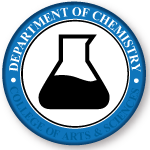Document Type
Article
Publication Date
2-2010
Publication Title
Environmental Science: An Indian Journal
Volume
5
Issue
1
First Page
86
Last Page
91
Abstract
Pharmaceuticals having the hydrazide functional group are an important division within anti-tuberculosis, anti-parasitic, anti-cancer, and anti-radiation chemotherapeutics. This work presents a colorimetric methodology to detect and quantify hydrazide based pharmaceuticals. Processes for rapid spot test, qualitative colorimetric assay, and spectrophotometric quantitative assay are presented. The reagent 2,6-dichloroquinon-4-chloroimine (Gibb's reagent) is utilized to accomplish the various analytical objectives. The rapid spot test and qualitative colorimetric assay enables a detection of hydrazide drugs to a level of 0.0037 grams per milliliter. Quantitative spectrophotometric detection of hydrazide drugs is sensitive to a level of 128.2 micrograms permilliliter. The molar absorptivity () is calculated to be 25.32 Liters/(molexcm) at 970nm. Inorganic salts and organic compounds were found not to interfere with colorimetric detection of hydrazide drugs, and this includes NaBr, NaCl, MgSO4, 2-naphthol, benzoin, p-aminobenzoic acid various other compounds. Reagents necessary for this methodological approach are readily available. The colorimetric response of these tests is readily identified by visual inspection. These methods then are highly sensitive and provide a manner to determine this important type of drugs from environmental as well as biological origins.
Recommended Citation
Bartzatt, Ronald, "Spectrophotometric and colorimetic methodology to detect and quantify hydrazide based chemotherapeutic drugs" (2010). Chemistry Faculty Publications. 31.
https://digitalcommons.unomaha.edu/chemfacpub/31


Comments
This article was originally published here: http://www.tsijournals.com/abstract/spectrophotometric-and-colorimetic-methodology-to-detect-and-quantify-hydrazide-based-chemotherapeutic-drugs-2084.html.